Vacuum Arc Remelting (VAR) - ALD Vacuum Technologies
Vacuum Arc Remelting (VAR) - ALD Vacuum Technologies
Vacuum Arc Remelting (VAR) - ALD Vacuum Technologies
Create successful ePaper yourself
Turn your PDF publications into a flip-book with our unique Google optimized e-Paper software.
<strong>ALD</strong> <strong>Vacuum</strong> <strong>Technologies</strong><br />
High Tech is our Business<br />
<strong>Vacuum</strong> <strong>Arc</strong> <strong>Remelting</strong> (<strong>VAR</strong>)<br />
<strong>Vacuum</strong> <strong>Arc</strong> <strong>Remelting</strong> Processes and Furnaces
<strong>Vacuum</strong> <strong>Arc</strong><br />
<strong>Remelting</strong> (<strong>VAR</strong>)<br />
<strong>ALD</strong> is one of the leading<br />
suppliers of vacuum<br />
melting furnace technologies<br />
for engineered metals<br />
12 ton <strong>VAR</strong> furnace from <strong>ALD</strong><br />
<strong>VAR</strong> is widely used to improve the<br />
cleanliness and refine the structure of<br />
standard airmelted or vacuum induction<br />
melted ingots (called consumable electrodes).<br />
<strong>VAR</strong> steels and superalloys as well as<br />
titanium and zirconium and its alloys are<br />
used in a great number of high-integrity<br />
applications where cleanliness, homogeneity,<br />
improved fatigue and fracture toughness<br />
of the final product are essential.<br />
Fields of Application<br />
OOAerospace<br />
OOPower generation<br />
OOChemical Industry<br />
OOMedical and nuclear industries<br />
<strong>VAR</strong> Applications<br />
OOSuperalloys for aerospace<br />
OOHigh strength steels<br />
OOBall-bearing steels<br />
OOTool steels (cold and hot work steels)<br />
for milling cutters, drill bits, etc.<br />
OODie steels<br />
OOMelting of reactive metals (titanium, zirconium<br />
and their alloys) for aerospace, chemical industry,<br />
off-shore technique and reactor technique<br />
02
<strong>VAR</strong> Advantages &<br />
<strong>ALD</strong> Features<br />
<strong>ALD</strong> has numerous references<br />
in the field offering<br />
the highest levels of<br />
system automatization<br />
10 ton <strong>VAR</strong> furnace from <strong>ALD</strong><br />
Primary benefits of <strong>VAR</strong><br />
OORemoval of dissolved gases, such as hydrogen,<br />
nitrogen and CO<br />
OOReduction of undesired trace elements with high<br />
vapor pressure<br />
OOAchievement of directional solidification of the<br />
ingot from bottom to top<br />
OOElimination of macro-segregation and reduction<br />
of micro-segregation<br />
OOImprovement of oxide cleanliness<br />
Further advantages<br />
OORemoval of Oxides<br />
by chemical and physical processes<br />
OORemoval of Nitrides<br />
by thermally dissociation or reduction by carbon<br />
present in the alloy, and final removal via the<br />
gas phase<br />
OORemoval of Stable Non-metallic Inclusions<br />
Some inclusions (e.g. alumina and titanium-carbonitrides)<br />
are removed by flotation during remelting.<br />
The remaining inclusions are broken up and evenly<br />
distributed in the cross-section of the solidified ingot.<br />
Features of <strong>VAR</strong> furnaces from <strong>ALD</strong><br />
OOIngot diameters up to 1,500 mm<br />
OOIngot weights up to 50 tons<br />
OOElectrode is melted by means of a DC arc under<br />
vacuum (electrode negative, melt pool positive)<br />
OO<strong>Remelting</strong> currents up to 50 kA<br />
OO<strong>Vacuum</strong> range: 1 - 0.1 Pa (some applications up<br />
to 1000 Pa)<br />
OOElectrode weighing system<br />
OOStable or free-standing gantry design;<br />
OOCoaxial high current feeding system.<br />
<strong>VAR</strong> 03
Process Technology<br />
and Process<br />
Characteristics<br />
<strong>ALD</strong>´s process expertise<br />
guarantees high process<br />
reproducibility and<br />
material quality<br />
12 ton <strong>VAR</strong> furnace from <strong>ALD</strong><br />
<strong>VAR</strong> is the continuous remelting<br />
of a consumable electrode by means<br />
of an arc under vacuum<br />
The main process stages<br />
OOA consumable <strong>VAR</strong> electrode is generated by<br />
VIM, ESR, EB or plasma methods, assembled<br />
from titanium sponge, scrap or bulk, or by a<br />
prior <strong>VAR</strong> melt<br />
OODC power is applied to strike an arc between the<br />
electrode and the baseplate of a copper mold<br />
contained in a water jacket<br />
OOThe intense heat generated by the electric arc<br />
melts the tip of the electrode and new ingot<br />
collects in the mold<br />
OOThe melt rate is precisely regulated by the <strong>VAR</strong><br />
control system<br />
OOA high vacuum is maintained throughout the<br />
remelting process to remove impurities and<br />
prevent oxide formation<br />
OOIngot cooling is controlled for directional<br />
solidification.<br />
<strong>ALD</strong> has improved the basic design of <strong>VAR</strong> furnace in<br />
computer control and regulation continuously over the<br />
years to achieve:<br />
OOFully-Automatic remelting processes<br />
OOImproved Reproducibility of the metallurgical<br />
properties<br />
04
Directional Solidification<br />
of the <strong>Vacuum</strong> <strong>Arc</strong><br />
<strong>Remelting</strong> Process<br />
Precise control of the local<br />
solidification rate of the<br />
temperature gradient at the<br />
liquid/solid interface<br />
Achieving the optimum <strong>VAR</strong> ingot<br />
solidification structure requires precise<br />
control of the local solidification rate<br />
and the temperature gradient at the<br />
liquid/solid interface.<br />
High Temperature Gradient<br />
at the solidification front must be maintained during<br />
the entire remelting process to achieve a directed<br />
dendritic primary structure.<br />
Dendrite Growth Direction<br />
conforms to the direction of the temperature gradient,<br />
i.e., the direction of the heat flow at the moment of<br />
solidification, at the solidification front. The direction of<br />
the heat flow is always perpendicular to the solidification<br />
front or, in case of a curved interface, perpendicular<br />
to the respective tangent. The growth direction of the<br />
dendrites is thus a function of the melt pool profile<br />
during solidification.<br />
Melt Pool Profile<br />
As pool depth increases with the remelting rate, the<br />
growth angle of the dendrites, with respect to the<br />
ingot axis, also increases. Without proper <strong>VAR</strong> melt<br />
controls, the ingot core can solidify non-directionally,<br />
e.g., in equiaxed grains, leading to segregation and<br />
micro-shrinkage. Even in the case of directional<br />
solidification, micro-segregation increases with<br />
dendrite arm spacing. A solidification structure with<br />
dendrites parallel to the ingot axis yields optimal results.<br />
Optimal Melt Rates<br />
A good ingot surface requires a certain level of<br />
energy input. Optimal melt rates and energy inputs<br />
depend on ingot diameter and material grade, which<br />
means that the necessary low remelting rates for large<br />
diameter ingots cannot always be maintained to achieve<br />
axis-parallel crystallization.<br />
<strong>VAR</strong> 05
Understanding<br />
and Preventing<br />
Solidification<br />
Defects<br />
Metallurgists agree that in spite of<br />
directional solidification, defects such as<br />
“tree ring patterns”, “freckles” and<br />
“white spots” can occur in remelted<br />
ingots. These defects can lead to rejection<br />
of the ingot, particularly in the case of<br />
special alloys.<br />
Tree ring patterns<br />
OOCan be identified in a macro-etched transverse<br />
section as light-etching rings<br />
OOUsually represent a negative crystal segregation<br />
OOSeem to have little effect on material properties<br />
Freckles<br />
Freckles and white spots have a much greater<br />
effect on material properties as compared to tree<br />
ring patterns and can represent a significant cause for<br />
premature failure of turbine disks in aircraft engines.<br />
White Spots<br />
OOWhite spots are typical defects in <strong>VAR</strong> ingots.<br />
They are recognizable as light etching spots on<br />
a macro-etched surface<br />
OOThey are lower in alloying elements, e.g.,<br />
titanium and niobium in Inconel 718<br />
<strong>ALD</strong> mitigates these problems in the<br />
<strong>VAR</strong> with precise and stable melt<br />
rate and arc gap control, and robust<br />
power supplies designed specifically<br />
for this purpose.<br />
Tree Ring Patterns Freckles<br />
White Spots Intended<br />
06
<strong>ALD</strong> <strong>VAR</strong><br />
Furnaces<br />
Design<br />
Features<br />
1<br />
8<br />
3<br />
Schematic of the <strong>VAR</strong> furnace<br />
9<br />
5<br />
4<br />
1 Electrode feed drive<br />
2 Furnace chamber<br />
3 Melting power supply<br />
4 Busbars/cables<br />
5 Electrode ram<br />
6 Water jacket<br />
with crucible<br />
7 <strong>Vacuum</strong> suction port<br />
8 X-Y adjustment<br />
9 Load cell system<br />
2<br />
6<br />
7<br />
Design Features of all<br />
<strong>ALD</strong> <strong>VAR</strong> Furnaces<br />
OOGantry design of furnace head superstructure<br />
features simple platform<br />
installation with no flexure of the<br />
superstructure under load. Consistent<br />
centering of the electrode.<br />
OOProven electro-mechanical dual electrode<br />
drive system for very precise control of<br />
small melt speeds during the remelting<br />
process and fast speeds for charging<br />
procedures.<br />
OORemotely controlled, pneumatically<br />
operated electrode/stub clamp with<br />
maximum melting current transfer to<br />
the electrode.<br />
OOThe furnace is of fully coaxial design<br />
avoiding stirring action of the melt bath due<br />
to unsymmetrical magnetic stray fields.<br />
OOPower supply with space saving design,<br />
thyristor or saturable reactor control<br />
designed specifically for fast response<br />
and tight current control.<br />
OOSophisticated weight management system<br />
including highly accurate, fully temperature<br />
compensated load cell system and<br />
statistical based melt rate algorithm.<br />
OOCompletely automatic operation of the<br />
furnace by the use of password-protected<br />
preset melt recipes, stored locally or<br />
downloaded from any host system.<br />
OOStatistical Process Analysis (SPA) is<br />
possible with the data acquisition system<br />
of the Operator Interface PC in combination<br />
with the optional Supervisory Sytem PC.<br />
<strong>VAR</strong><br />
07
<strong>VAR</strong><br />
Process Control<br />
<strong>ALD</strong>’s automatic melt control<br />
system (AMC) is unsurpassed<br />
in the world for its accuracy,<br />
reproducible metallurgical<br />
quality and ease of operation<br />
<strong>ALD</strong> provides precise control of all <strong>VAR</strong><br />
remelting parameters for reproducible<br />
production of homogeneous ingots, which<br />
are free of macro-segregation and show<br />
controlled solidification structure and<br />
superior cleanliness<br />
Computer controlled process<br />
automation used by <strong>VAR</strong> furnaces<br />
fulfills today’s most stringent<br />
material quality specifications<br />
<strong>ALD</strong>’s <strong>VAR</strong> control systems handle:<br />
OOLogic control functions<br />
OOContinuous weighing of the consumable electrode<br />
OOClosed loop control of process parameters<br />
(e.g. remelting rate, arc gap based on arc voltage<br />
or drop short pulse rate)<br />
OOData acquisition<br />
OOData management<br />
Communication via field bus or<br />
specific interfaces<br />
Operator interface PC (OIP)<br />
OOActs hierarchically as master of the automatic melt<br />
control system (AMC)<br />
OOUtilized as interface between operator and<br />
<strong>VAR</strong> process<br />
OOServes for process visualization, featuring parameter<br />
indications, graphic displays and soft keys for<br />
operator commands, editing and handling of<br />
remelting recipes, data acquisition and storage and<br />
for generation of melt records<br />
OOCan be optionally equipped with an Ethernet<br />
network interface which may be utilized for data<br />
transfer to other computers connected to the local<br />
area network (e.g. supervisory PC, customer’s main<br />
frame, etc.)<br />
Melt Recipes<br />
OO<strong>ALD</strong> furnaces work with established remelting<br />
parameters, stored as remelting recipes on hard<br />
disk, for repeatable <strong>VAR</strong> production of specific<br />
ingot sizes and material grade combinations, to<br />
assure full metallurgical ingot quality<br />
China<br />
<strong>ALD</strong> Liaison Office<br />
c/o C&K Development Co., Ltd.<br />
Rm. 1102, South Office Tower<br />
Hong Kong Plaza<br />
283 Huai Hai Zhong Rd.<br />
Shanghai, 200021, China<br />
Phone: +86 (21) 63 85 - 55 00<br />
e-mail: ald@ald-vt.cn<br />
Great Britain<br />
<strong>ALD</strong> <strong>Vacuum</strong> <strong>Technologies</strong> Ltd.<br />
First Floor<br />
276 High Street<br />
Guildford, Surrey GU 1 3JL, UK<br />
Phone: +44 (1483) 45 44 34<br />
e-mail: info@aldvactech.co.uk<br />
USA / Canada<br />
<strong>ALD</strong> <strong>Vacuum</strong> <strong>Technologies</strong>, Inc.<br />
18, Thompson Road<br />
East Windsor, CT 06088, USA<br />
Phone: +1 (860) 386 72 27<br />
e-mail: info@ald-usa.com<br />
<strong>ALD</strong> <strong>Vacuum</strong> <strong>Technologies</strong> GmbH<br />
Wilhelm-Rohn-Strasse 35<br />
D-63450 Hanau, Germany<br />
Phone: +49 (0) 6181 - 307-0<br />
Fax: +49 (0) 6181 - 307-3290<br />
e-mail: info@ald-vt.de<br />
Internet: www.ald-vt.de<br />
Far East (Japan/Korea/Taiwan)<br />
<strong>ALD</strong> Thermo <strong>Technologies</strong> Far East<br />
Co., Ltd.<br />
10F. Shinjuku Nomura Bldg.<br />
1-26-2 Nishi-Shinjuku, Shinjuku-Ku<br />
Tokyo 163-0558, Japan<br />
Phone: +81 (3) 33 40 37 26<br />
e-mail: Peter.Lang@ald-vt.de<br />
Russia<br />
<strong>ALD</strong> <strong>Vacuum</strong>yje Technologii OOO<br />
ul. Bolschaja Ordynka 40, str. 2<br />
109017 Moskau, Russia<br />
Phone: +7 (495) 787 6733<br />
e-mail: ald@metallurg.com.ru<br />
MetaCom / <strong>VAR</strong> / 09.13


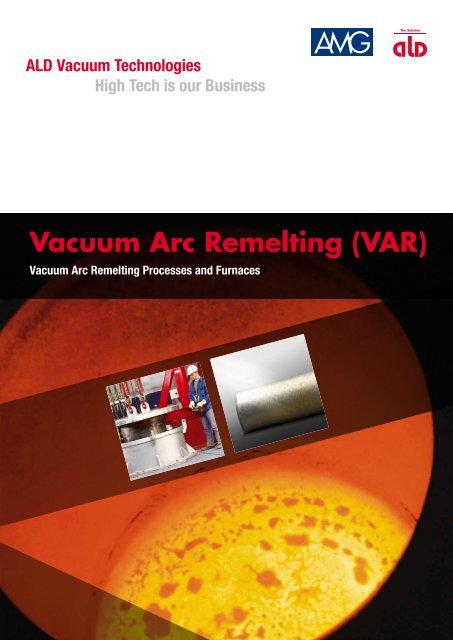
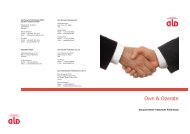
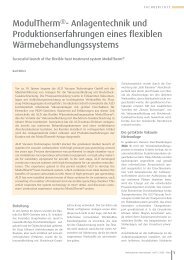
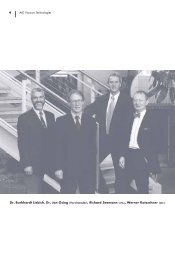
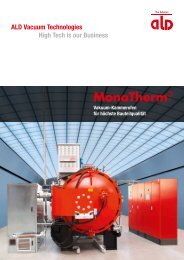
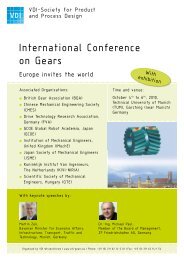
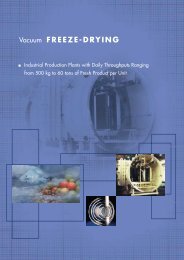
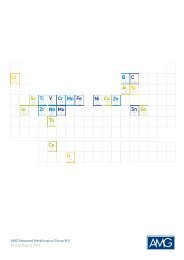
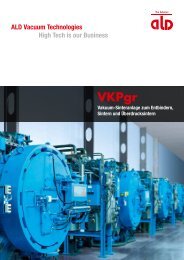

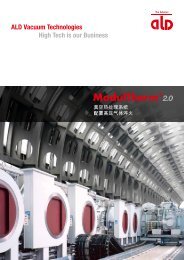
![TITANIUM brochure [PDF] - ALD Vacuum Technologies](https://img.yumpu.com/30889132/1/184x260/titanium-brochure-pdf-ald-vacuum-technologies.jpg?quality=85)

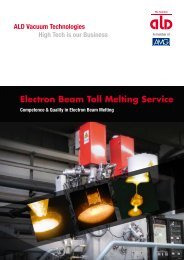
![(VID) Technology brochure [PDF] - ALD Vacuum Technologies](https://img.yumpu.com/30095121/1/184x260/vid-technology-brochure-pdf-ald-vacuum-technologies.jpg?quality=85)